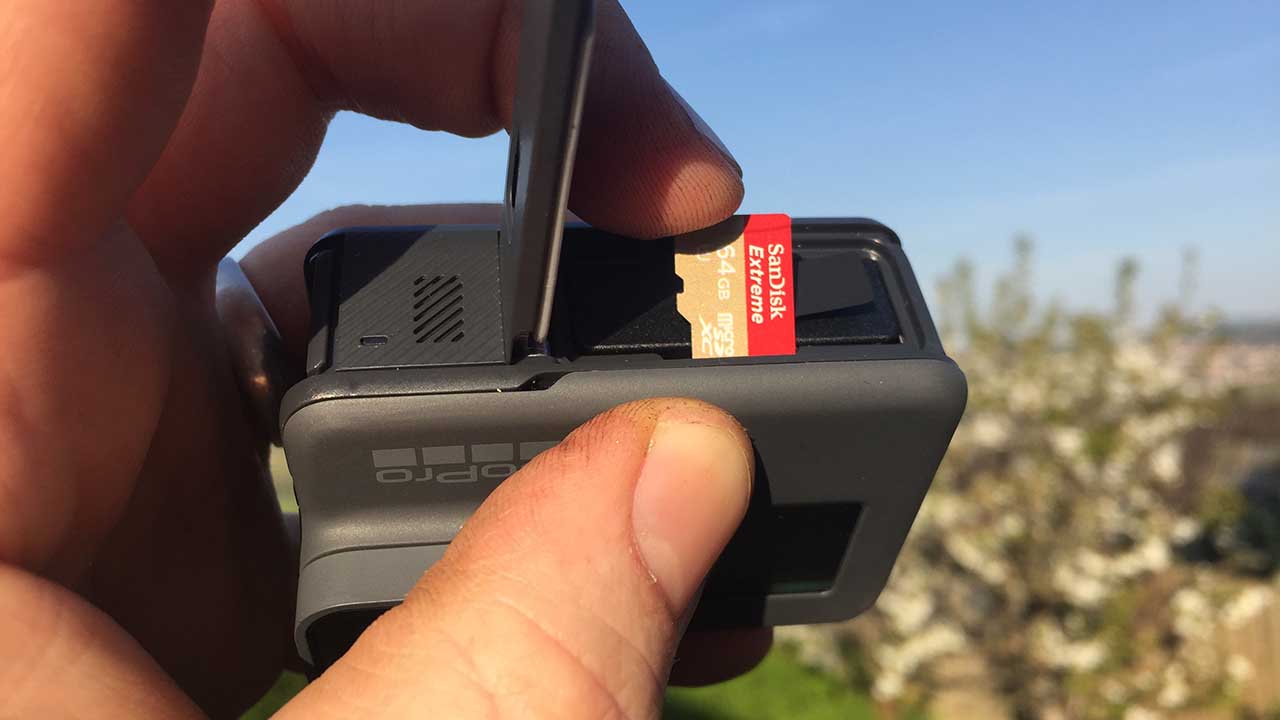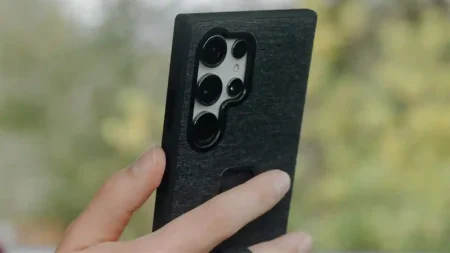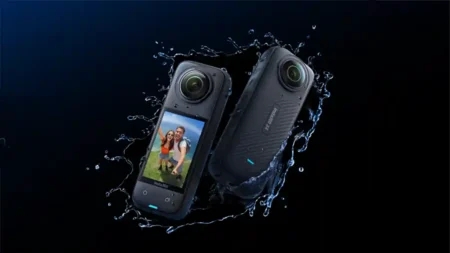You’ve taken time to selected the perfect action camera, be that the bloggers companion, the Yi 4K+ or the extreme sports favourite and market leader, the GoPro Hero5 black. Camera in hand it’s now time to look at selecting the right memory card for your GoPro or other action camera, one that will help you and your camera reach full potential.
MicroSD cards are flash memory, if you haven’t come across them before then they’re the smaller siblings of the SD card used by the majority of DSLRs and CSCs to store imaging data. MicroSD cards due to their size are commonly used in action and compact cameras as well as mobile phones and tablets.
It’s a great format, exceptionally small, lightweight and they can pack in huge capacities that are increasing all the time. Although the shape and size of the microSD card might be consistent, the speed at which the various different cards can read and write data varies greatly.
When it comes to today’s action cameras the demands on storage are pretty hefty. 4K and 1080p Full HD video with frame rates of up to 120 frames per second are becoming common place so you need a MicroSD card with some clout if it’s going to keep up with all that action.
Buying a MicroSD card for your camera shouldn’t be difficult but when you pop into your local store or look online you’ll noticed that there are literally hundreds of different microSD cards to choose from. These vary from just a few pounds or dollars right up to well over one hundred.
Look at the specifications for the cards and they can be pretty confusing, showing all sorts of symbols along with read and write speeds, so which is the best one for you and your action camera?
Really your choice of card is two tiered, you need a card that will store the footage the camera is capturing quickly, and this will vary on the resolution and frame rate you’re capturing video, and you also want a card with a decent read speed for when you’re reviewing the footage you’ve shot.
Before we look at MicroSD cards it’s worth understanding some common data sizes for video. These are rough guides as the size of a file will increase or decrease dependent on the content of the scene being captured. This data has been taken from video captured on a GoPro Hero5 Black for 1 second at each of the following settings – these values have also been rounded up.
4k at 30fps = 4mb
2.7k at 30fps = 3mb
1080p at 120fps = 4mb
1080p at 60fps = 2mb
1080p at 30fps = 2mb
720p at 240fps = 4mb
720p at 60fps = 2mb
Looking at this data we can see what we’re going to need from any MicroSD card we’re about to purchase. Flash memory manufacturers have done quite a bit to help us make an informed buying choice and use a series of symbols to let us know what a cards specifications are when it comes to write speeds.
They also like to highlight the read speeds in big bold numerics on the packaging but in real terms the read speeds of most cards are perfectly adequate for our requirements as action camera users, so for the most part these can be ignored so we can just concentrate on the cards write speeds.
At present there are bands of speed for SD and MicroSD cards. Speed Class, UHS Speed Class and Video Speed Class, and these have been set out by the SD Association, the body in charge of monitoring the SD technology and community.
MicroSD card speed classes
Speed Class was the first of the speed ratings to appear and has been around for a few years. You’ll find Speed Class 2, 4, 6 and 10. How these translate into write speeds is pretty simple; Class 2 has a minimum right speed of 2mb/s up to class 10 that has a minimum write speed of 10mb/s.
These cards are fine for standard definition video and just about passable for Full HD although occasionally there may be a slight issue.
UHS Speed Class is relatively new and the speed banding is cut from four to two, either UHS-1 or UHS-3. These mean minimum write speeds of 10mb/s and 30mb/s respectively. Obviously there’s a slight cross over with the Class 10 and UHS-1 so you will see cards with both symbols.
UHS-1 is fine for Full HD although as with Class 10 you may occasionally have an issue, and UHS-3 is designed for Full HD and 4K. Although 4K does again start to push the abilities of these cards speed ratings.
Video Class (V) these cards are all new and designed for the latest generation of cameras. At the time of writing I’m not sure what cameras are at present compatible other than GoPro, but as soon as the first samples arrive I’ll check it out. These new cards come in either V60 or V90. Again these values refer to minimum write speeds so 60mb/s or 90mb/s.
V class cards are perfectly suited to capturing 4K video and 8K, although as yet there are no consumer enabled action cameras that can shoot at this rate. Maybe the GoPro Hero6 Black when that arrives later in the year.
Best memory card for GoPro: it’s not all about speed
Speed is of course important but so is capacity and as you look through the MicroSD cards you’ll see capacities ranging from 2GB to 2TB. That’s quite a range and to be honest at present you’re unlikely to find a 2TB MicroSD card.
Capacity is just as important as speed and again there are a series of symbols that its worth knowing when you’re looking at your selection. These are;
SD Standard these cards have capacities up to 2GB, this is pretty useless for action cameras as they’ll fill almost immediately.
SDHC Standard these cards range from 2-32GB. 16-32GB are generally a good choice for a day shoot, pack a couple just to make sure you don’t run out.
SDXC Standard 32GB-2TB these cards are now becoming the most common especially as the size and quality of video increases.
Write speeds and capacities are the most important factors, but alongside a decent write speed you’ll also get a pretty decent read speed. This comes in useful when you’re either review your footage or downloading to a computer later. Usually this value is the large one that the manufacture will shout about on the packaging.
Some premium brands such as SanDisk and Lexar offer image rescue software with some of their premium and high capacity cards and this can be a worth while addition.
There’s a lot to consider when it comes to buying a MicroSD card for your GoPro or action camera, but really armed with a little bit of knowledge about what all the symbols mean and the write speeds and capacity you need it shouldn’t take long to find the card that is a perfect match for your camera and wallet.
When I look to buy a MicroSD card for my GoPro or other action camera on test I’ll always opt for a couple of 32GB UHS-3 at present.
This gives a good 2 hours of recording time at the resolution and frame rates that are common for the present batch of action cameras such as; 4K 30fps and 1080p 120fps. 32GB will usually last a day if I make sure that I start and stop recordings between shots and at 32GB thats not too much footage to go through and edit at the end of the day.
Also – and most importantly when it comes to capacity and cost – I’m not too devastated when I drop and lose one down a drain, in the sea, off a cliff, under the desk, down the back of a chair, out of a window or I snap one in half because the slot I think is the card slot isn’t…



